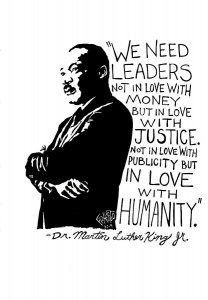Celebrating the legacy of Dr. Martin Luther King, Jr.
 Monday, January 16th, marks Martin Luther King Jr. Day in the United States. Most of us know about the peace movement of Dr. King during the Civil Rights Era of the 1960s. However, MLK Jr.’s life and legacy are multilayered — and are defined by a time of protest, political tensions, a fight for humanitarian rights, and Dr. King’s evolving expectations of the movement.
Monday, January 16th, marks Martin Luther King Jr. Day in the United States. Most of us know about the peace movement of Dr. King during the Civil Rights Era of the 1960s. However, MLK Jr.’s life and legacy are multilayered — and are defined by a time of protest, political tensions, a fight for humanitarian rights, and Dr. King’s evolving expectations of the movement.
Here is a collection of resources that highlights a legacy that’s inspired grand institutions and everyday adventures rooted in Black culture.
Let’s not just celebrate but continue the work of Dr. Martin Luther King Jr. on this day—and far into the future.
Books by Dr. Martin Luther King, Jr.
Strength to Love. New York: Harper & Row Publishers, 1963. This is a collection of Dr. King’s most requested sermons.
Stride Toward Freedom: The Montgomery Story. New York: Harper & Row Publishers, 1958. Dr. King’s first book; the story of the Montgomery Bus Boycott and the beginning of the Nonviolent Civil Rights Movement.
The Trumpet of Conscience. New York: Harper & Row Publishers, 1968. (Foreword by Coretta Scott King.) This book is taken from the 1967 Massey Lectures, which King gave through the Canadian Broadcasting Corporation. King addresses issues, including the Vietnam War, youth and civil disobedience, and concludes with the “Christmas Sermon for Peace.”
Where Do We Go from Here: Chaos or Community? New York: Harper & Row Publishers, 1967. An assessment of America’s priorities and a warning that they need to be re-ordered.
Why We Can’t Wait. New York: Harper & Row Publishers, 1963. The essential writings of Martin Luther King, Jr., James M. Washington, ed.
Learn about MLK Jr.’s life and legacy
Virtual tour of the National Museum of African American History and Culture
Virtual tour of the National Civil Rights Museum
Black culture on display
Take a free graffiti tour in Bushwick, Brooklyn featuring artists from the Bushwick Collective.
Visit the African Burial Ground (Manhattan), the oldest and largest known excavated burial ground in North America for both free and enslaved Africans.
